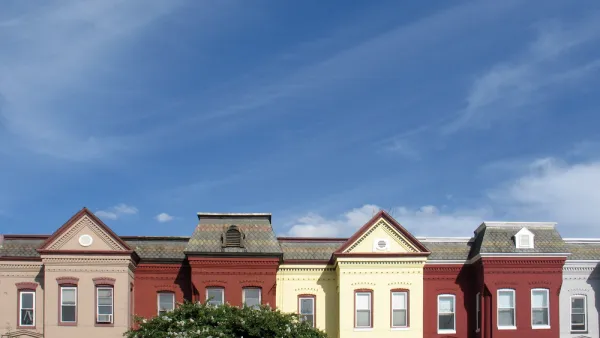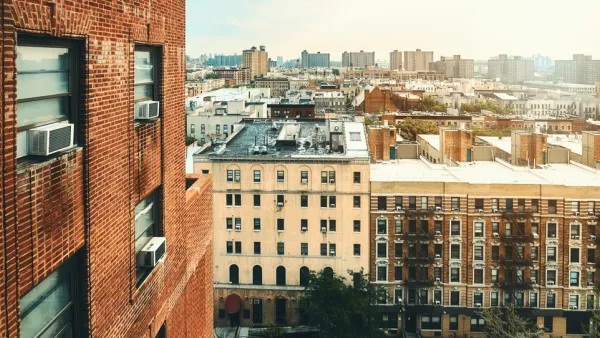The terms Central city, Inner city and urban have long been synonymous with the poorer, disadvantaged minority sections of metropolitan areas. Conversely, the suburbs have been associated with whites, affluence and job growth. For a long time, however, this dichotomy has failed to capture the gradual blurring of distinctive patterns that demarcate city from suburb. A recent Brookings report by Kenya Covington, Michael Stoll and yours truly underscores this point. The Housing Choice Voucher (HCV) program, the single largest affordable housing program in the country is almost as prevalent in the suburbs as in central cities.
The terms Central city, Inner city and urban have long been
synonymous with the poorer, disadvantaged minority sections of metropolitan
areas. Conversely, the suburbs have been associated with whites, affluence and
job growth. For a long time, however, this dichotomy has failed to capture the
gradual blurring of distinctive patterns that demarcate city from suburb. A
recent Brookings
report by Kenya Covington, Michael Stoll and yours truly underscores this
point. The Housing Choice Voucher (HCV) program, the single largest affordable
housing program in the country is almost as prevalent in the suburbs as in
central cities. Moreover, over the 2000-2008 period the rate at which black and
Latino voucher recipients suburbanized outpaced that of white voucher
recipients. Gone are the days when poverty of the type associated with
affordable housing was an urban problem.
This report comes on the heels of another
study by Elizabeth Kneebone and Emily Garr that showed that the suburban poverty
population now exceeded that found in central cities (it should be noted that
size of the total suburban population is much larger, and hence the suburban
poverty rate is still lower than the central city poverty rate).
These trends have enormous implications for planning. Particularly
when we consider the resources needed to address urban poverty. At least one of
the roots of planning grew from progressives' concerns with the slums of the
early industrial city. Progressives' concerns were motivated by both self-interest
and noblesse oblige. But the fact that the progressives often lived in the same
cities as the poor meant they could not always easily ignore the poor and that
the interests of the two groups' often overlapped because they were residents
of the same cities. Although poor city dwellers were in many ways better off
than their rural counterparts, living in the city made them more visible and
sparked some progressive reforms.
The suburbanization of poverty, however, runs the risk of
isolating the poor from the infrastructure that can help ameliorate some of the
challenges of poverty. Anchor institutions such as hospital and universities, and
major corporate headquarters are still more likely to be found in central
cities. More importantly, while suburbs as a whole are becoming more diverse
individual suburban jurisdictions, which are often relatively small, can still
be relatively homogenous.
Will the increasing suburbanization of poverty serve to
further isolate the poor or will it serve as springboard to escape poverty?
Good planning certainly has a role to play here.

National Parks Layoffs Will Cause Communities to Lose Billions
Thousands of essential park workers were laid off this week, just before the busy spring break season.

Retro-silient?: America’s First “Eco-burb,” The Woodlands Turns 50
A master-planned community north of Houston offers lessons on green infrastructure and resilient design, but falls short of its founder’s lofty affordability and walkability goals.

Delivering for America Plan Will Downgrade Mail Service in at Least 49.5 Percent of Zip Codes
Republican and Democrat lawmakers criticize the plan for its disproportionate negative impact on rural communities.

Test News Post 1
This is a summary

Test News Headline 46
Test for the image on the front page.

Balancing Bombs and Butterflies: How the National Guard Protects a Rare Species
The National Guard at Fort Indiantown Gap uses GIS technology and land management strategies to balance military training with conservation efforts, ensuring the survival of the rare eastern regal fritillary butterfly.
Urban Design for Planners 1: Software Tools
This six-course series explores essential urban design concepts using open source software and equips planners with the tools they need to participate fully in the urban design process.
Planning for Universal Design
Learn the tools for implementing Universal Design in planning regulations.
EMC Planning Group, Inc.
Planetizen
Planetizen
Mpact (formerly Rail~Volution)
Great Falls Development Authority, Inc.
HUDs Office of Policy Development and Research
NYU Wagner Graduate School of Public Service






























